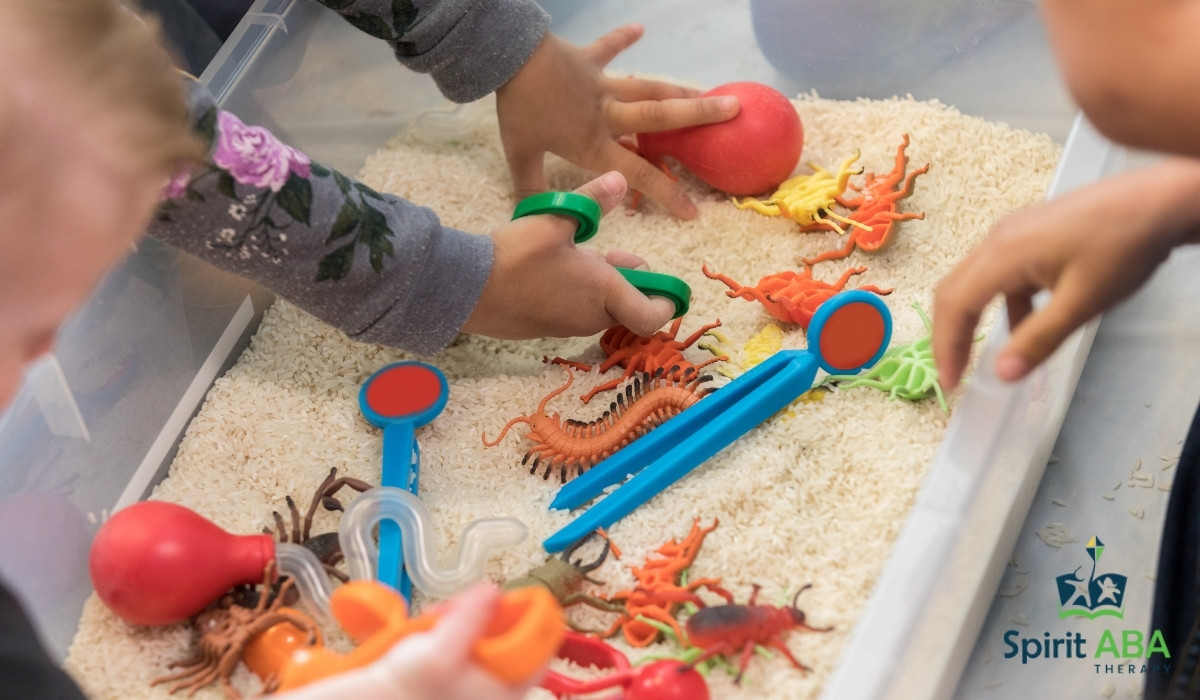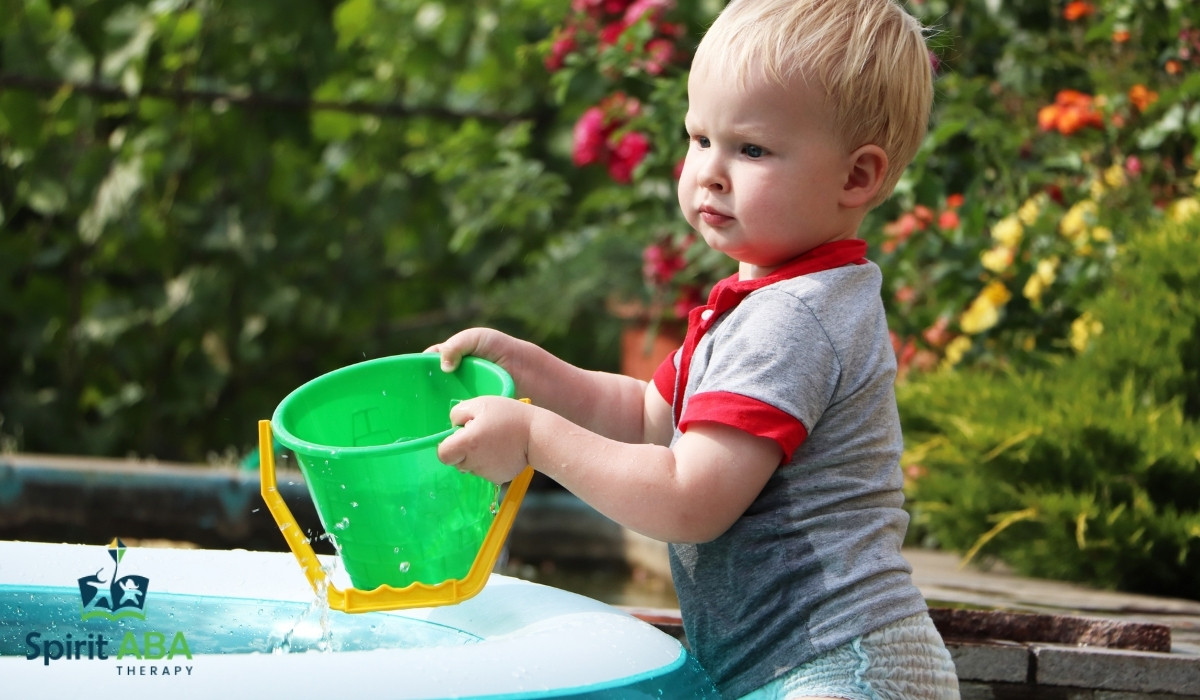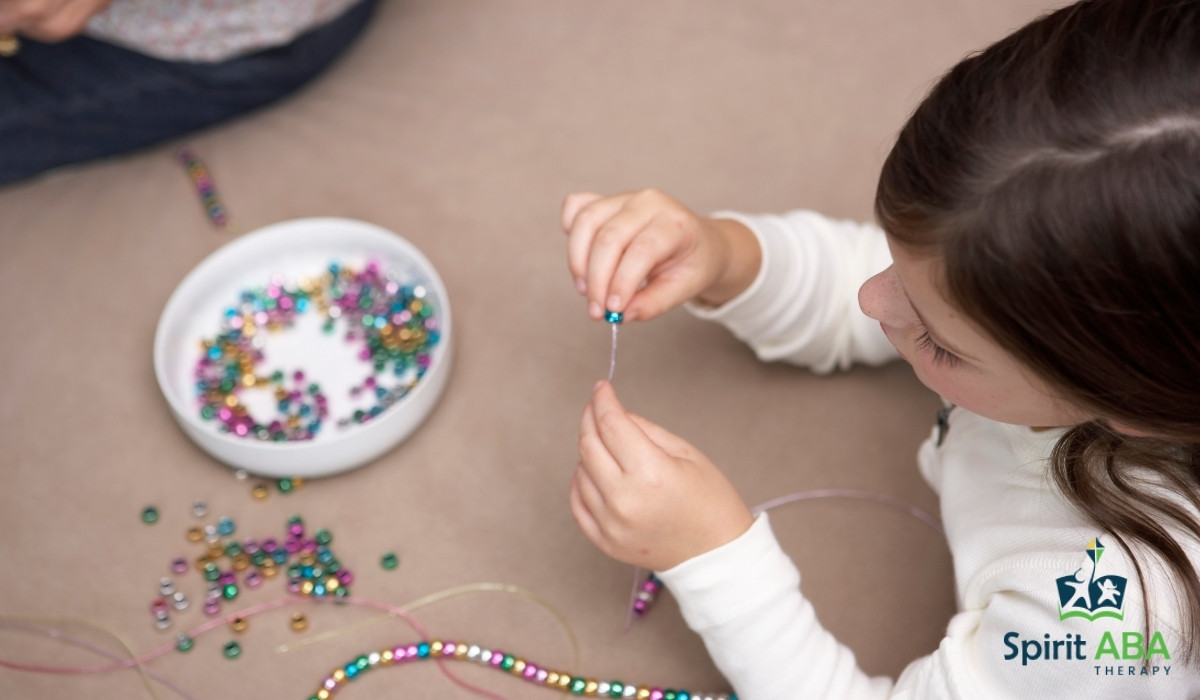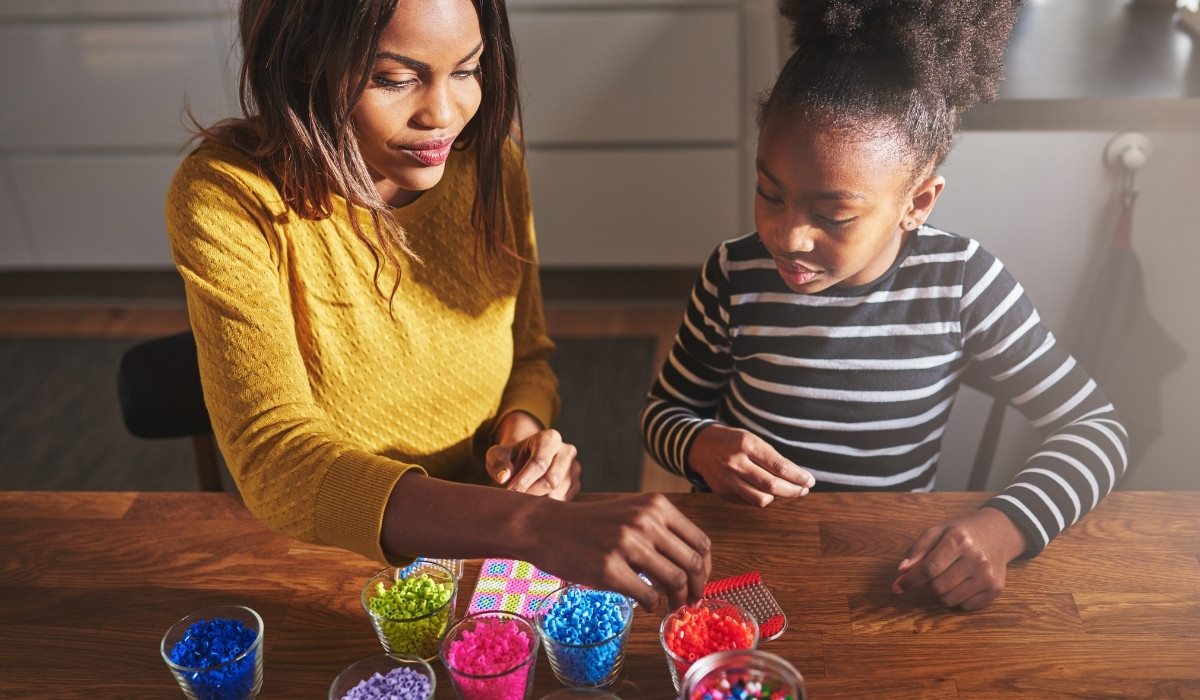Key Points:
- Sensory activities help children with autism improve focus, engagement, and social-emotional skills while making learning enjoyable.
- Using structured sensory play can address common challenges such as tactile sensitivities, motor coordination, and self-regulation.
- Parents and caregivers can incorporate these activities at home or in therapy sessions to complement ABA interventions.
Children with autism often experience the world differently, and sensory processing plays a crucial role in how they interact with their environment. Some children may be oversensitive to textures, sounds, or lights, while others seek intense sensory input to feel regulated. Integrating fun, structured sensory activities can not only help children engage but also support emotional regulation, fine and gross motor development, and communication skills.
Below, we explore 10 sensory activities designed to provide children with a mix of tactile, auditory, visual, and proprioceptive experiences. Each activity includes specific strategies to maximize developmental benefits.
Sensory Bins for Exploration
Sensory bins are containers filled with materials that children can touch, scoop, pour, and sort. These bins provide a safe space for exploration and allow children to engage in hands-on learning while developing fine motor skills.
- Rice or Beans Bin: Fill a shallow container with dry rice or beans and add small toys or utensils. Children can scoop, pour, and hide objects, which enhances tactile awareness and hand-eye coordination.
- Water Beads: These squishy, colorful beads provide a unique tactile experience. Children can practice picking up, sorting, or even arranging them by color or size. Water beads also encourage sensory tolerance for unusual textures.
- Themed Bins: Incorporate themed items like ocean animals, farm figures, or shapes. This approach combines imaginative play with sensory exploration, supporting language development as children label and describe objects.
These activities are versatile, allowing parents or therapists to adjust the difficulty or introduce new materials gradually.
 Play Dough and Clay Activities
Play Dough and Clay Activities
Manipulating play dough or clay provides a rich tactile experience and strengthens muscles needed for writing, cutting, and self-care skills.
- Simple Shapes and Letters: Encourage children to form letters, numbers, or simple shapes. This not only builds hand strength but also introduces early literacy and numeracy skills.
- Imaginative Scenes: Children can create animals, vehicles, or people, which supports creativity and narrative skills.
- Scented or Textured Dough: Introducing different textures or smells—such as glitter, sand, or essential oils—can expand sensory tolerance while keeping play engaging.
Consistent practice with these materials can improve fine motor control and tactile acceptance, especially for children who are initially hesitant to touch certain textures.
Obstacle Courses for Gross Motor Development
Obstacle courses combine movement and sensory input, helping children develop coordination, balance, and body awareness. These activities also provide opportunities for following directions and improving executive functioning.
Before setting up an obstacle course, it’s helpful to give a visual demonstration or break the course into steps. Here are some ideas:
- Cushion Path: Arrange cushions on the floor for children to jump, step, or crawl across. This encourages balance, spatial awareness, and leg strength.
- Tunnel Crawls: Using a play tunnel or even cardboard boxes, children can crawl through, which strengthens core muscles and builds proprioceptive input.
- Jumping and Hopping Stations: Add hoops, lines, or mats for hopping, jumping, or balancing. Pairing movements with counting or color recognition can add an educational component.
Obstacle courses can be adapted to each child’s sensory needs. Some may prefer a slower, guided course, while others benefit from more challenging, energetic movements.
 Musical and Sound Activities
Musical and Sound Activities
Auditory experiences are essential for children with autism to develop listening, attention, and rhythm skills. Music and sound play activities are not only enjoyable but also support language and cognitive growth.
- Instrument Play: Provide instruments like drums, tambourines, or xylophones. Encourage children to tap rhythms, follow patterns, or play along to familiar songs.
- Sound Matching Games: Use everyday objects to create sounds (shakers, pots, claps) and ask children to identify or match them. This helps with auditory discrimination.
- Movement and Music Integration: Combine songs with actions, like “clap hands” or “stomp feet,” to improve motor planning and coordination while making music interactive.
These activities can also serve as a calming tool for children who become overstimulated, allowing them to regulate their emotions through predictable patterns.
Finger Painting and Messy Art
Art activities that involve direct hand use offer a strong tactile experience, which is particularly beneficial for children with sensory sensitivities.
- Paint with Hands or Fingers: Using non-toxic paints, children can explore colors and textures with hands rather than brushes. This encourages tactile engagement and fine motor development.
- Textured Art Supplies: Add rice, sand, or fabric pieces to paint or glue to enhance tactile variety. Children can feel differences in textures while learning to combine materials creatively.
- Guided Patterns: For children who prefer structure, provide outlines for coloring, stamping, or pattern creation. This can reduce anxiety while promoting skill development.
Finger painting also integrates visual stimulation and creativity, making it a comprehensive sensory activity.
Water Play
Water-based activities are versatile and provide tactile, auditory, and proprioceptive input simultaneously. They are excellent for teaching cause-and-effect, turn-taking, and fine motor skills.
- Pouring and Measuring: Provide cups, funnels, and containers of different sizes. Children can pour water between containers, learning concepts like volume, measurement, and control.
- Floating Objects: Introduce floating toys or boats. Children can predict which items float or sink, promoting early science skills and observation.
- Water Table Fun: For larger setups, water tables allow multiple children to interact, fostering social skills while offering rich sensory experiences.
Water play can also have a calming effect, especially for children who benefit from repetitive, soothing sensory input.
 Texture Walks
Texture Walks
Walking on different textures helps children with autism develop tactile discrimination, balance, and proprioception. This is particularly useful for those who are sensitive or avoidant of certain surfaces.
- Indoor Texture Path: Create a path using mats, rugs, bubble wrap, or carpet squares. Encourage children to walk barefoot, noting differences in feel.
- Outdoor Exploration: Grass, sand, pebbles, and mud provide a variety of natural textures. Walking barefoot or with light shoes enhances tactile input and body awareness.
- Balance Challenges: Integrate stepping stones, foam pads, or low beams to challenge coordination and motor planning.
Texture walks can be incorporated into daily routines or therapy sessions, making sensory experiences part of functional skills practice.
Sensory Bottles and Calm-Down Jars
Sensory bottles are visually engaging tools that can help children self-regulate emotions and practice attention skills. They are easy to make and can be personalized for each child’s needs.
- Liquid Glitter Bottles: Combine water, glue, and glitter in a clear bottle. Children can shake the bottle and watch the glitter settle, which can be soothing during moments of stress.
- Object Bottles: Add small beads, buttons, or sequins to observe movement patterns. Encourage children to describe what they see or predict how items move.
- Color Mixing Bottles: Fill bottles with colored water and allow children to mix colors. This enhances visual discrimination and introduces early science concepts.
Using sensory bottles as a calming strategy is practical at home, in classrooms, or therapy sessions to reduce frustration and promote focus.
Chewy and Oral Sensory Tools
Oral sensory activities can provide proprioceptive input that helps children with self-regulation and focus. These tools are especially beneficial for children who seek oral input or struggle with oral sensitivities.
- Chewy Tubes or Straws: Encourage children to bite or suck on safe chewy materials. This can help with anxiety, self-soothing, and oral motor development.
- Crunchy Foods: Incorporate crunchy snacks like carrots, pretzels, or apple slices during structured snack time. This adds a sensory experience to daily routines.
- Flavored or Textured Foods: Offering mild variations in flavor or texture (soft vs. firm) can gradually expand sensory tolerance and dietary variety.
Always ensure that activities are safe and supervised, and consider dietary restrictions or allergies when introducing new textures.
Swinging and Vestibular Activities
Vestibular input, which relates to balance and spatial orientation, can help children improve coordination, attention, and overall body awareness.
- Indoor Swings: Gentle swinging can provide rhythmic vestibular input, promoting calming and focus.
- Spinning or Rocking: Rocking chairs, small spinning toys, or balance boards can stimulate vestibular senses safely.
- Movement Games: Incorporate jumping, rolling, or gentle spinning in a controlled environment to enhance proprioception and motor planning.
Vestibular activities are often integrated into ABA therapy sessions to help children manage sensory-seeking or sensory-avoidant behaviors effectively.
Supporting Development with ABA Therapy
Incorporating sensory activities into daily routines can significantly benefit children with autism, but pairing these strategies with structured ABA therapy can amplify progress. At Spirit ABA, our programs integrate sensory-friendly approaches with evidence-based behavior analysis techniques. By using ABA therapy, children not only enjoy fun and engaging activities but also work on communication, social skills, self-regulation, and adaptive behaviors in a structured, measurable way.
If you’re looking for professional support, Spirit ABA offers ABA therapy in Iowa, Nebraska, and Colorado. Our experienced team can guide families in creating personalized plans that include sensory activities like the ones listed above, ensuring therapy is both effective and enjoyable.
Contact us today to learn how ABA therapy can make a meaningful difference in your child’s growth and development.


